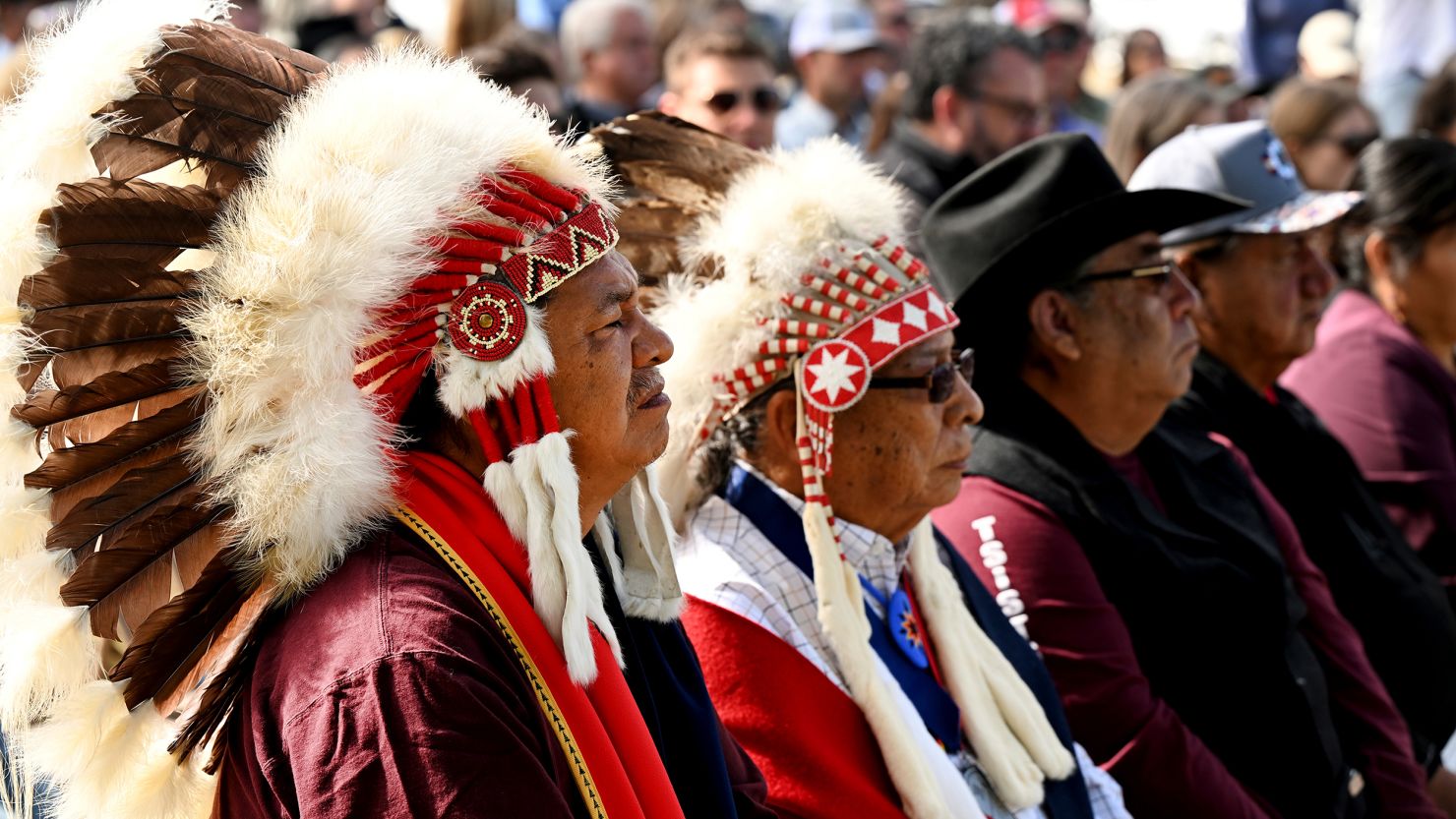The announcement of the expansion of the Sand Creek Massacre National Historic Site by more than 3,000 acres is welcome news for the governor of the Cheyenne and Arapaho tribes.
“The Cheyenne and Arapaho Tribes are excited to see the additional 3,478 acres to the Sand Creek Massacre National Historic Site which is providing security for the protection of our Sacred site,” Cheyenne and Arapaho Tribes Governor Reggie Wassana told CNN in an email.
“Our preservation is critical to learning and educating America about the past,” he said.
The expansion is thanks to a new acquisition announced Wednesday by Interior Secretary Deb Haaland.
“It is our solemn responsibility at the Department of the Interior, as caretakers of America’s national treasures, to tell the story of our nation. The events that took place here forever changed the course of the Northern Cheyenne, Northern Arapaho, and Cheyenne and Arapaho Tribes,” Haaland said in statement.

The historic site was established to preserve the location of the 1864 Sand Creek Massacre, where US soldiers attacked an encampment of Native Americans, killing 230. This new purchase will grow the site by 3,478 acres.
“These new parcels include lands listed on the National Register of Historic Places for their significance to the devastating events of November 29, 1864. These lands also have significant archaeological remains of the massacre, including evidence of the village where Cheyenne and Arapaho families were camped, and an intact viewshed that is key to the historical integrity of the National Historic Site,” Janet Frederick, Sand Creek Massacre National Historic Site Superintendent, said in a press release.
The acquisition was made through funding from the Land and Water Conservation Fund, which was “was critical to facilitating the acquisition from a willing seller, with financial support from Great Outdoors Colorado and the National Park Foundation,” the Department of Interior said in a statement.
Haaland was joined by US Sens. Michael Bennet and John Hickenlooper of Colorado in support of the expansion.
“This is a long overdue step to respect and preserve land sacred to the Northern Cheyenne, northern Arapaho, Cheyenne, and Arapaho Tribes,” Bennet said in a press release.
“That something like Sand Creek could happen and go unacknowledged for so long is egregious. And it’s why we come back and remember what happened here,” Hickenlooper said.
